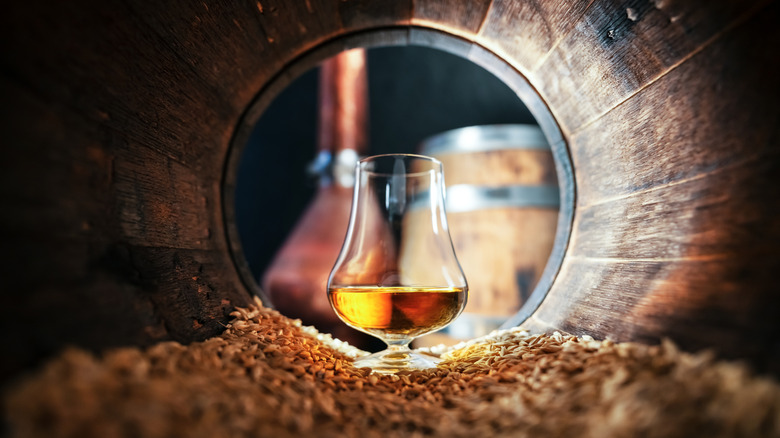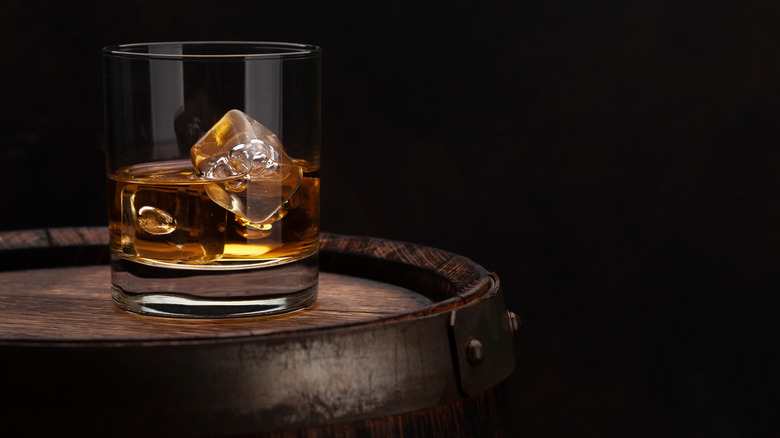Full Proof Vs Barrel Proof Vs Cask Strength: The Difference In Bourbons
If you're a bourbon fan, you have likely come across terms like "full proof," "barrel proof," and "cask strength" on labels or at tastings. While these terms may seem interchangeable at first glance, they represent distinct stages in the bourbon-making process, and these distinctions can significantly impact the final product's flavor, aroma, and strength. Whether if you're new to the world of bourbon or consider yourself a connoisseur, understanding these terms can help you make informed choices about your bar order, next bottle, or even how you make your bourbon ball dessert, and it can deepen your appreciation for this spirit overall.
What is full proof bourbon?
Full proof bourbon is bottled at the same alcohol by volume (ABV) it had when it first went into the barrel for aging. This usually means it starts at 125 proof (62.5% ABV) — there can be slight differences depending on the distillery. During the aging process, the proof might go up or down due to factors like evaporation and the environment inside the warehouse where it is distilled. The loss of water increases the ABV and in order to bring the bourbon back to its original proof (or full proof) distillers add water back in to lower the ABV. This ensures every bottle of a particular bourbon tastes the same, giving drinkers a consistent experience.
Making full proof bourbon is a bit of a balancing act. Distillers have to consider many factors, like where the barrel is placed in the warehouse and how long it ages. They keep a close eye on these factors to make sure the bourbon turns out just right. This attention to detail results in a bourbon that truly reflects its original character and gives you a taste of what it was like in the spirit's early stages.
Straight from the barrel with barrel proof bourbon
Barrel proof bourbon (or barrel strength bourbon) is bottled straight from the barrel with little to no water added. This means the ABV can be quite sporadic, usually somewhere between 110 and 130 proof (55% to 65% ABV). Barrel proof bourbon creates a bold, complex, and intense drinking experience, since it is undiluted. This leaves a raw, concentrated flavor that might taste a bit stronger.
When drinking barrel proof bourbon, expect strong notes of oak from the barrel, caramel undertones, and a warming sensation from the higher alcohol content. If you like your whiskey robust and bold, this one might be for you.
Cask strength creates a pure and flexible bourbon experience
Cask strength bourbon is essentially the same as barrel proof, though the term "cask" is more common with Scotch whiskey. It is important to note that the difference between whiskey and bourbon is that bourbon is an American spirit and can only be made in new barrels from the United States. Just like barrel proof, cask strength bourbon is bottled at its natural proof straight from the cask (barrel). This means the alcohol content can differ from cask to cask, with each one developing its own unique character based on things like temperature, and humidity during aging.
Cask strength bourbon also offers a level of control to the drinker. Since it is bottled with no dilution, you have the flexibility to adjust it to your preference. You can enjoy it neat for a powerful, unfiltered experience, or on the rocks (with ice), which adds water to fine-tune the flavor, and intensity to your liking. This element of customization makes cask strength bourbon particularly appealing to collectors and connoisseurs. Drinking it undiluted provides an authentic taste of what the distillers have crafted, allowing you to experience the spirit in its most natural state.




